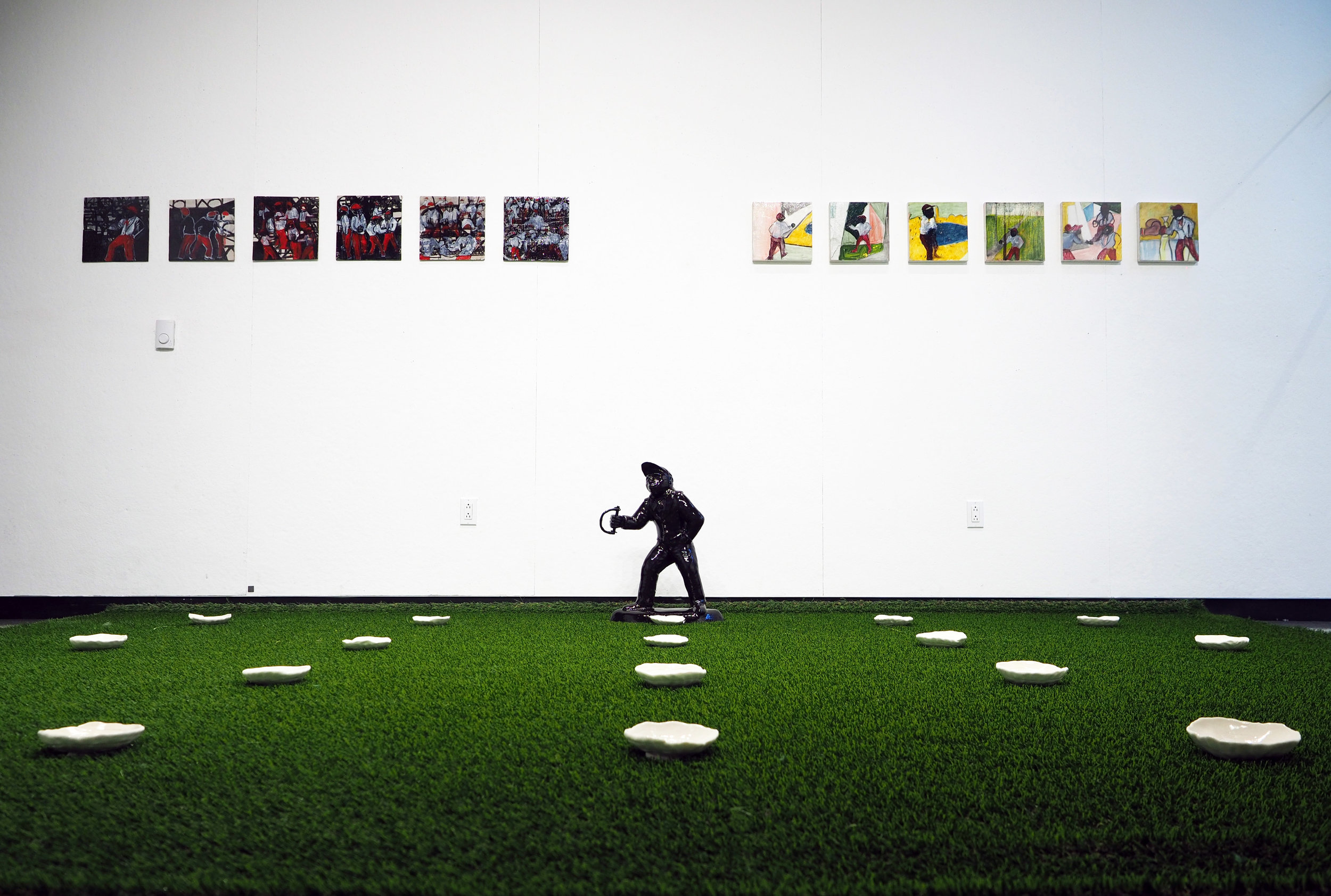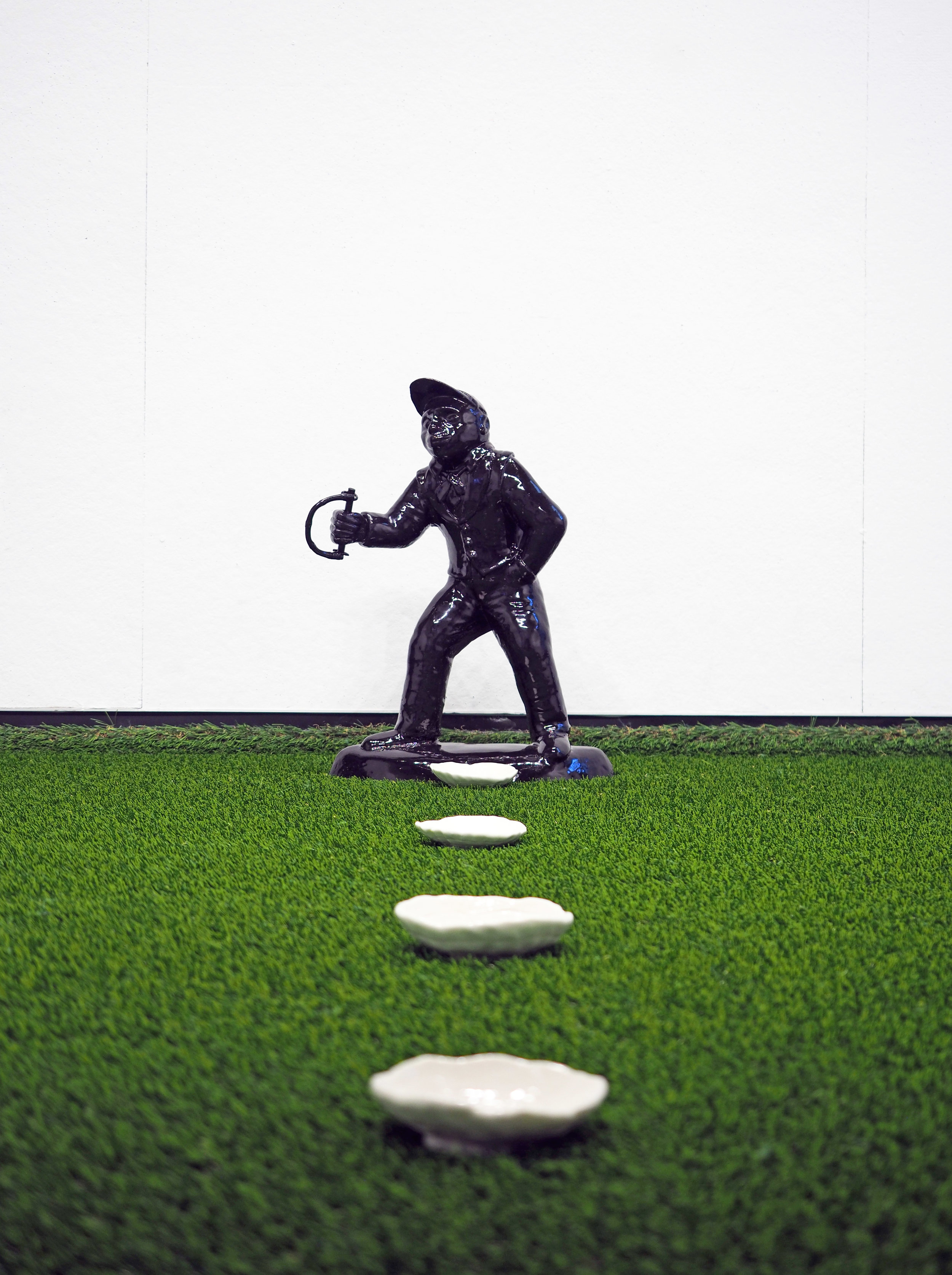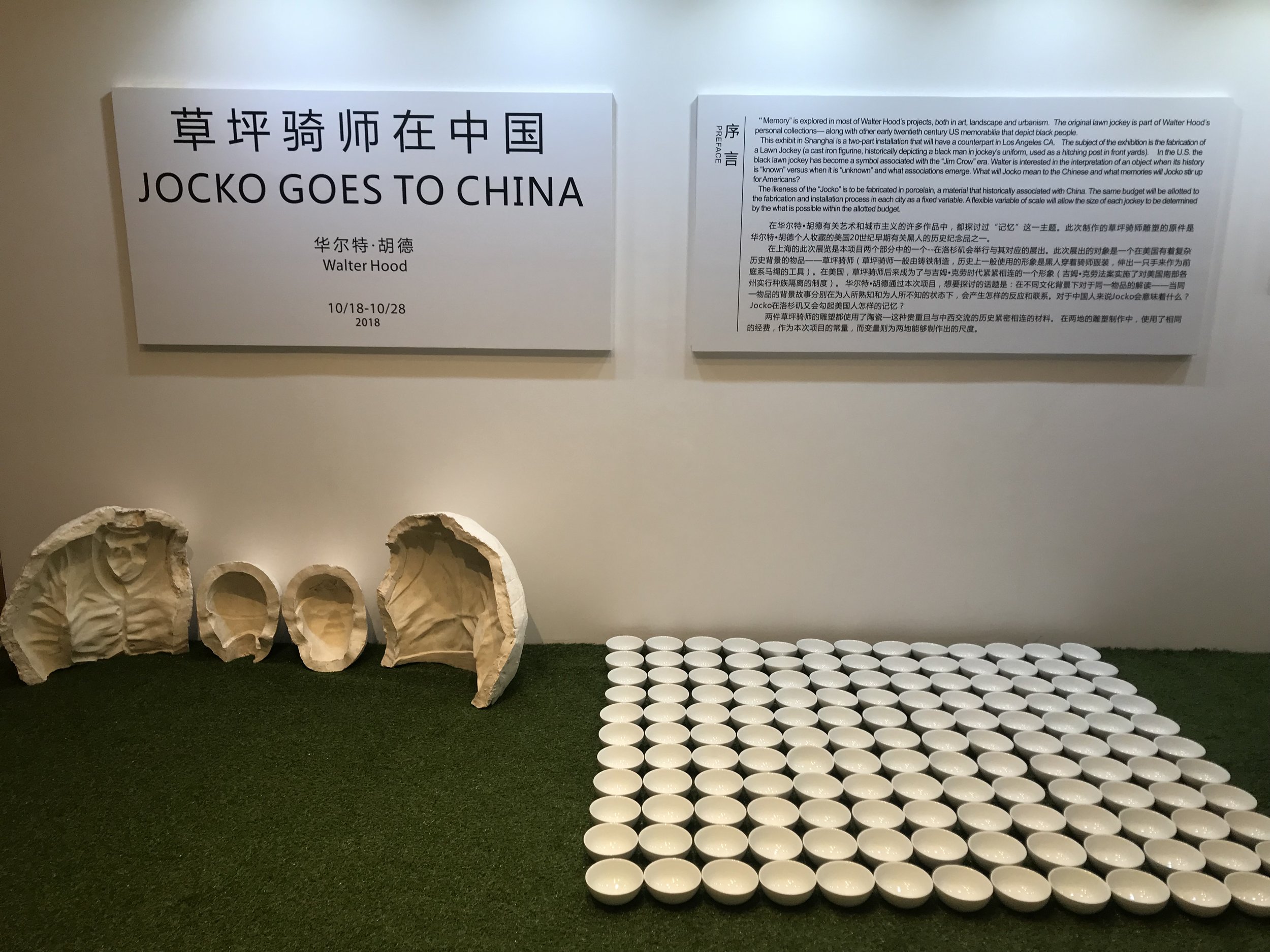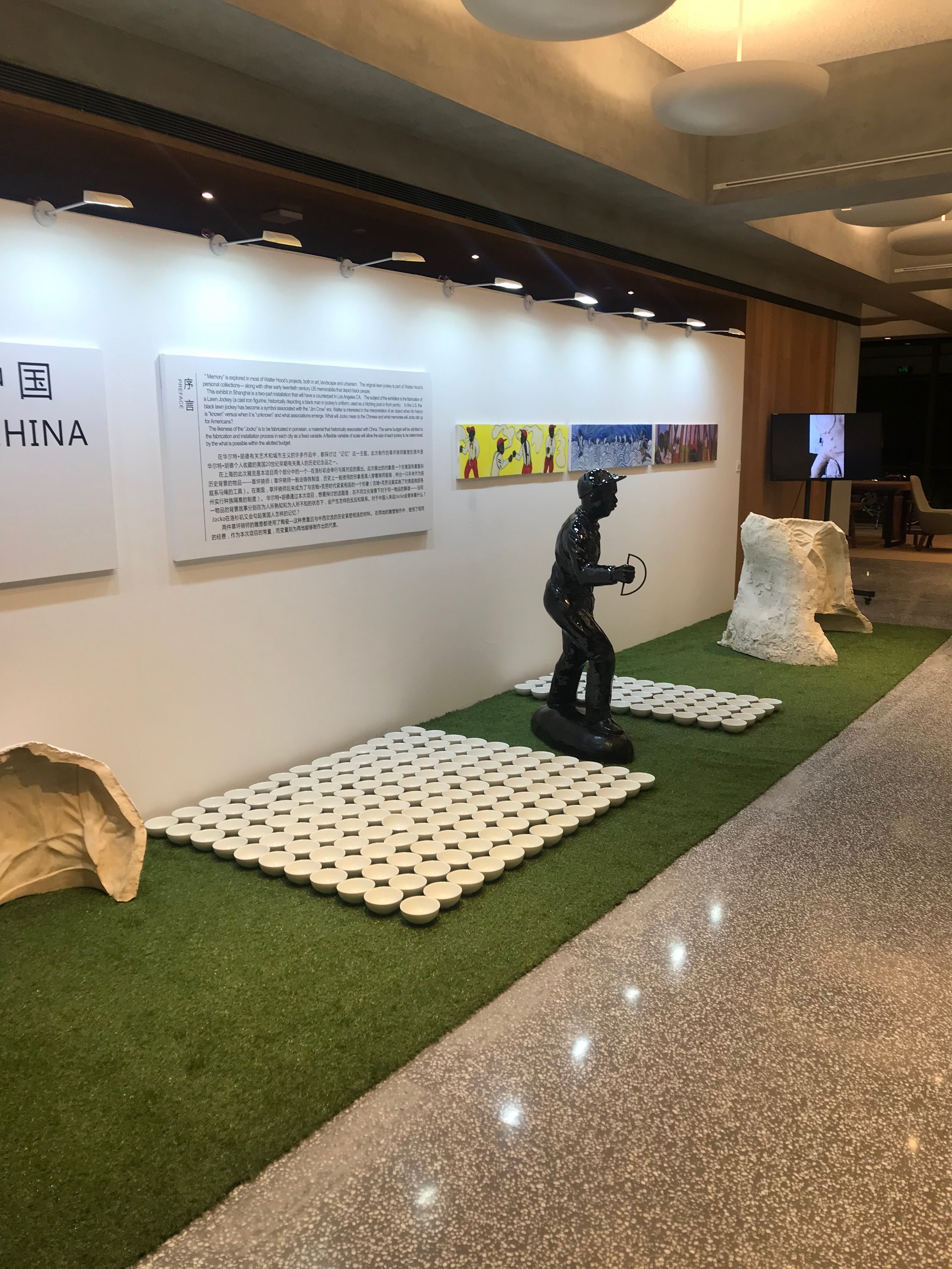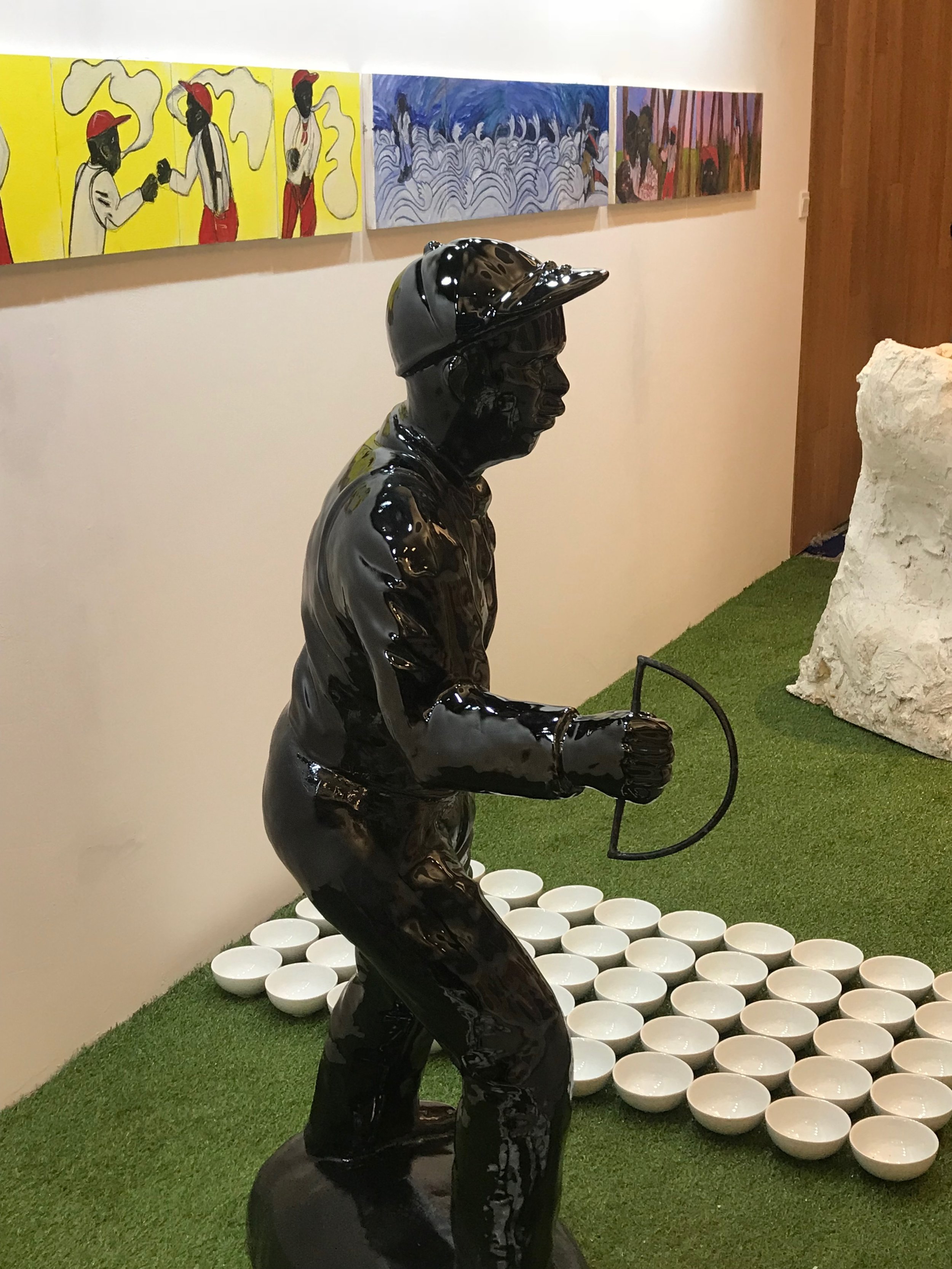In Jocko Goes to China and Jocko Goes to Los Angeles, Walter Hood explores the cultural differences that emerge in the art fabrication process when two different local artisans and different materials are employed to produce an enigmatic sculptural work.
Historically in the US, the lawn jockey is a decorative cast iron or concrete figurine of a diminutive man extending a ring for a hitching post for horses or lanterns. Jocko, as it is called, has many myths attached to him. One is that he froze to death while awaiting George Washington on his historic crossing of the Delaware; another is that he was a way finder in the underground railroad, providing a lit path to freedom for slaves escaping the south. In the US, most understand the issues attached to this symbolic figure, interpreting the depiction of the black figure as subservient and racist. But in China, the cultural significance is not readily interpreted through the figure.
For this project Jocko - the cartoonish, boy version of the lawn jockey - was sculpted twice in porcelain: one by a fabrication artist in Long Beach, California and again by a local fabrication artist in Jingdezhen, China. Setting a $5000 budget constraint for both statues, the differences in scale, materials, and fabrication technique emerge from both the local cultures and economies. In particular, porcelain presents a major point of departure for the differences in these two statues since it is a ceramic art form that originated in Jingdezhen, China. Often colloquially referred to as “fine china”, porcelain is coveted by the west and is endemic to trade between China and the US.
USC American Academy in China - 2018 Fellowship
Shanghai, China - Los Angeles, CA - October 2018
Budget: $10,000
Height: 5 Feet (China); 2 Feet (Los Angeles)
Materials: Porcelain, Artificial Turf, Acryllic, Plaster Molds


